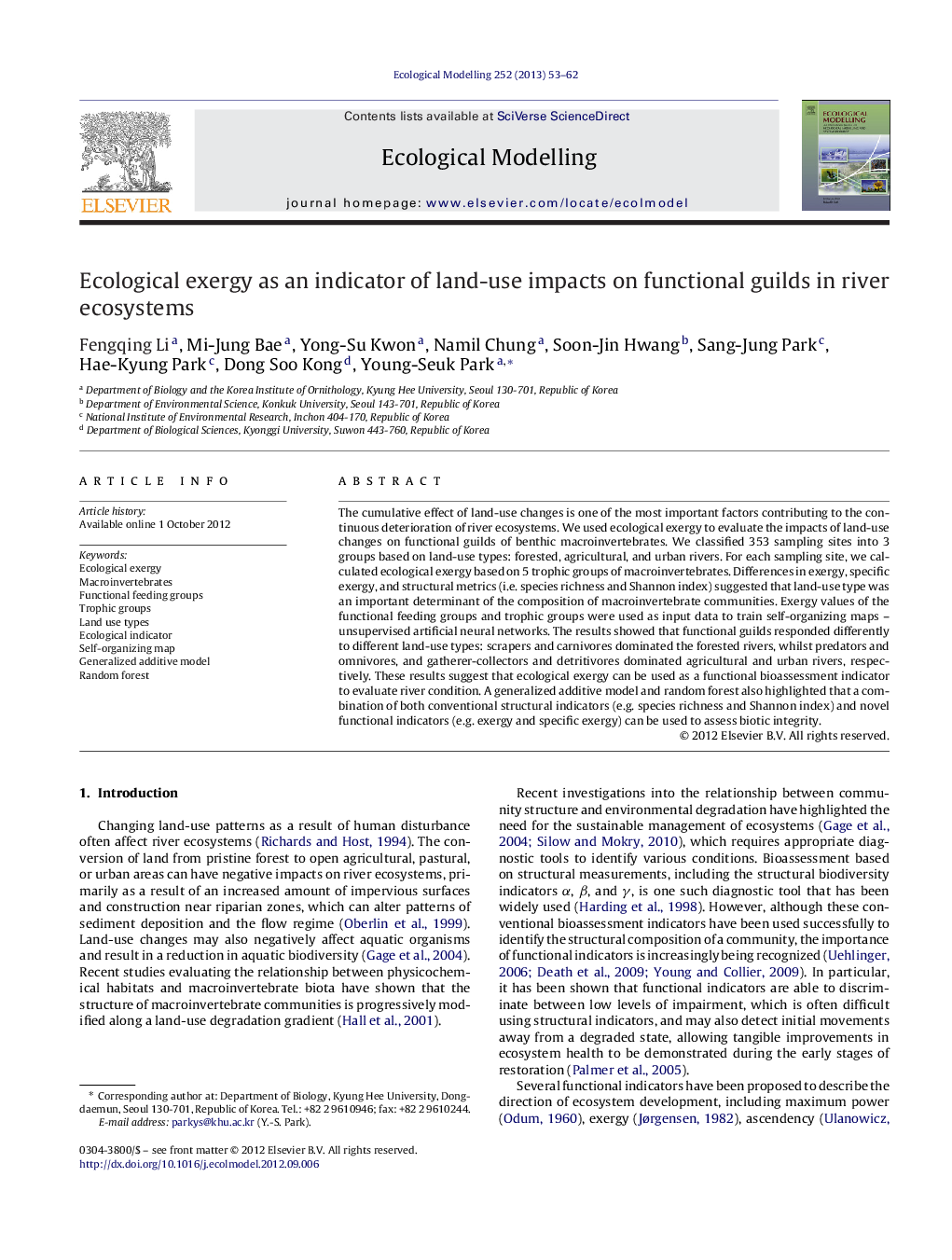| Article ID | Journal | Published Year | Pages | File Type |
|---|---|---|---|---|
| 4376188 | Ecological Modelling | 2013 | 10 Pages |
The cumulative effect of land-use changes is one of the most important factors contributing to the continuous deterioration of river ecosystems. We used ecological exergy to evaluate the impacts of land-use changes on functional guilds of benthic macroinvertebrates. We classified 353 sampling sites into 3 groups based on land-use types: forested, agricultural, and urban rivers. For each sampling site, we calculated ecological exergy based on 5 trophic groups of macroinvertebrates. Differences in exergy, specific exergy, and structural metrics (i.e. species richness and Shannon index) suggested that land-use type was an important determinant of the composition of macroinvertebrate communities. Exergy values of the functional feeding groups and trophic groups were used as input data to train self-organizing maps – unsupervised artificial neural networks. The results showed that functional guilds responded differently to different land-use types: scrapers and carnivores dominated the forested rivers, whilst predators and omnivores, and gatherer-collectors and detritivores dominated agricultural and urban rivers, respectively. These results suggest that ecological exergy can be used as a functional bioassessment indicator to evaluate river condition. A generalized additive model and random forest also highlighted that a combination of both conventional structural indicators (e.g. species richness and Shannon index) and novel functional indicators (e.g. exergy and specific exergy) can be used to assess biotic integrity.
► We evaluated the land-use impacts on functional guilds in rivers by using exergy. ► Land-use type was an important determinant on exergy. ► SOM indicated that functional guilds responded differently to three land-use types. ► It highlighted a combination of conventional and exergy indicators in biotic assessment.
